The CHS Visiting Artist Program facilitates exchange between arts practitioners and researchers and supports contemporary artistic responses to ancient Greek culture. The program offers artists the opportunity to consult with the CHS research community and access its library resources on a short-term basis. The artists also share their work-in-progress; select presentations are available on the CHS YouTube Channel.
The CHS Visiting Artists for the 2021-22 academic year are:
- Bettina Joy de Guzman (music)
- Tabatha Gayle (theater)
- Panos Kouros (visual arts)
- Muse Lee (musical theater)
- Lucrezia Maniscotti (dance)
- Ellen McLaughlin (theater)
- Allyson Vieira (visual arts)
- Sandra Voulgari (dance)
Bettina Joy de Guzman
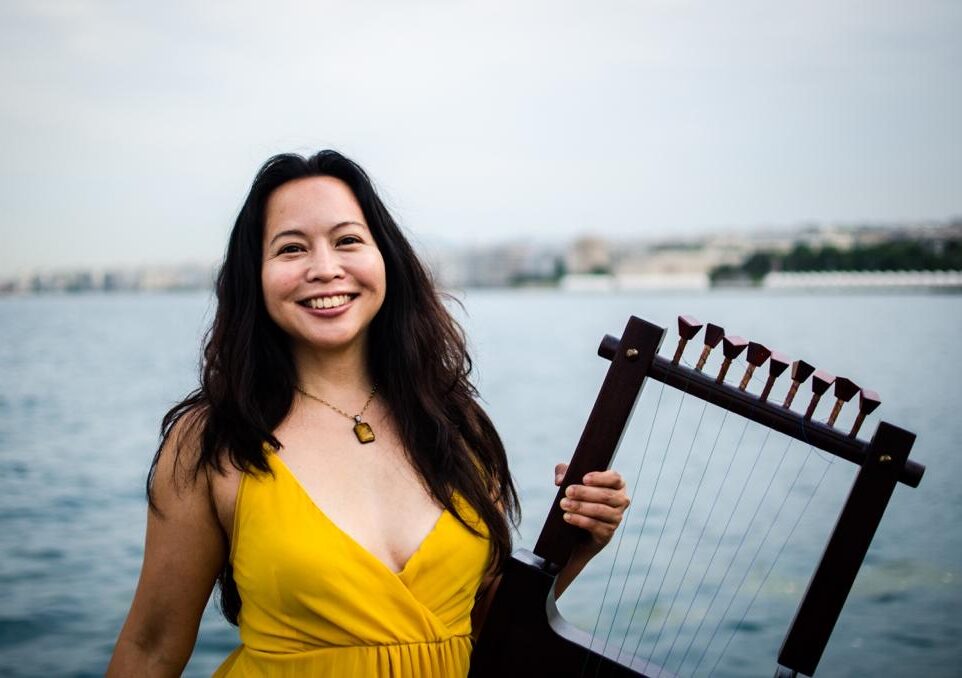
Bettina Joy de Guzman is a multi-instrumentalist, educator, and Classicist who composes music inspired by research of ancient cultures, especially Ancient Greek music and poetry. She is also an experienced performer of world dance and music. Her chief interests are in how songs transmit storytelling traditions and how individual cultures define themselves through song and dance. Through the lens of interdisciplinary studies, she looks at the cultural context of the verses in epic and Ancient Greek and Roman plays, and the meaning and reception of mythological ideas in set spaces and occasions.
Comparative studies can enrich the reconstruction of ancient music performance greatly. While at the Center for Hellenic Studies, Bettina plans to investigate parallels between traditional Epirote and Northern Greek music and dance and those of Ancient Greek choruses. By studying archived performances and recent footage in collaboration with academics and experts from specified locations, she will closely examine vocal sound, lyric themes, musical motifs, instrumental usage, and dance patterns of movement and rhythm in the regions of Nivica (Southern Albania), Dodona, and Dion. Each of these regions was selected not only for its location, but for dance and song rituals historically associated with its local sacred groves, temples, theaters, and annual music festivals. She would like to explore what each region’s practitioners and scholars evaluate as ancient or traditional versus what they believe has been integrated through the years from outside influences. Furthermore, she will investigate: What elements in song and dance do these cultures present as traditional and authentic to the general public, and more importantly, why do they choose these particular elements? What traditional elements of song and dance can we see mixed with modern aesthetics in performances? How does this compare with modern performances of Ancient Greek choruses in recent theater productions? How much of these elements, if any, had found their way into ancient Roman theater productions? Most relevantly, how can she, as a musician, integrate her findings into future collaborative performances?
Bettina uses her large collection of traditional, orchestral, and replica ancient instruments to help understand the reconstruction of ancient music. While practicing and experimenting with possible ways to play the instruments, she reflects on how the Ancient Greeks were always reinventing their music– e.g. experimenting with adding or subtracting strings, or holes, on wind and stringed instruments, and trying out different meters or musical ideas. Ancient Greek iconography of musicians, dancers, and actors, for example, show them singing and playing a variation of similar instruments during formal and informal events. There is also ample textual evidence of ordinary people singing and dancing as they worked, or taking part in celebrations. They had love songs, lullabies, weaving songs, and many other genres for various occasions, clearly with much room for individual creativity and variation. Such flexibility indicates an openness to multicultural approaches to musical adaptations. In that sense, ancient Greek musicians were no different from modern musicians. But it also complicates the research into and reconstruction of Ancient Greek music which needs investigators trained not just in the Classics but in music and dance from multiple cultures. Bettina plans to collaborate with colleagues and experts in related fields such as sensory or experimental archaeology, ethnomusicology, numismatics, and art history to help us envision the entirety of ancient Mediterranean culture: its textures, sounds, smells, tastes, and visual tapestry. Further cross-cultural, comparative conversations with Asian, African, and European studies would ultimately benefit the general public.
For more information, please visit: www.bettinajoydeguzman.com.
[Return to the top of the page]
Tabatha Gayle
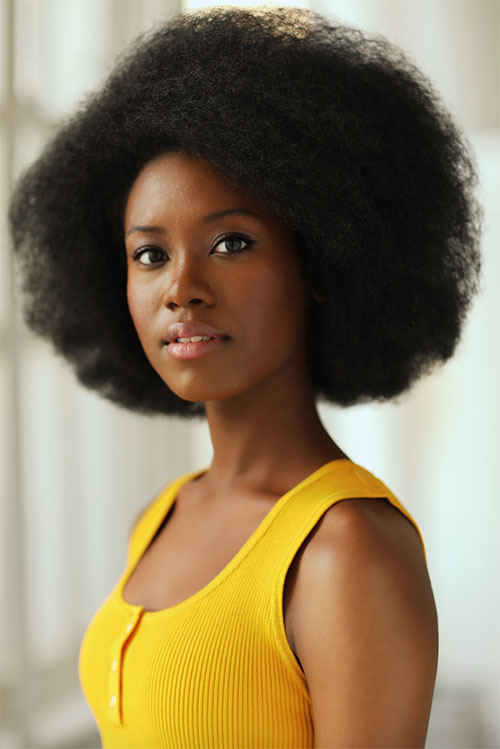
Tabatha Gayle (she/her/hers) is a black multi-disciplinary creator and performer. As a director, actor, writer, and poet, she has worked with companies and off-broadway theaters such as HERE Arts Center, Musical Theater Factory, Poetic Theater Productions, Ars Nova (ANT Fest), Prelude Festival, Out of Chaos (UK), The Tank, New York Musical Festival, The Bushwick Starr, New York Theater Workshop, The Resident Acting Company of New York, and Virginia Stage Company. She is a Resident Artist with New Light Theater Project.
Tabatha is drawn to the unflinching emotional and philosophical magnitude of Greek drama, and the universality of human experience that it represents. She is passionate about working with these stories containing common themes of morality and questions posed to form a foundation for more specific, underrepresented, and pressing conversations.
[Return to the top of the page]
Panos Kouros

Panos Kouros is an artist and art theorist working with performative interventions in the wider public realm. He is a professor of art in architecture at the University of Patras, where he runs the Laboratory for Research in Art and the Public Sphere. During his work as research Fellow at the renowned Center for Advanced Visual Studies (CAVS) at MIT at the beginning of the 1990s, he introduced ruinarchitecture, as critical concept, methodology and materiality, into the techno-social concerns of urban environmental art.
His current practice focuses on public interventions in response to urban situations and institutional art contexts, using diverse processes, media, and practices, from architecture constructions, installations, and performances to collective modes of action and small-scale interpersonal encounters, mostly occurring outside art institutions. They have been extensively published and presented in many art venues in the US, Greece, Germany, Mexico, China, Italy, UK and other countries; among others, in 9th (2004) and 12th (2010) Venice Architecture Biennale, Biennale of Sao Paolo (Urban Void collective 2007), University of Kassel in conjunction with Documenta 12 (2007), MIT Museum (2018). His works are part of individual and museum collections, such as the MIT Museum, the Herbert F. Johnson Museum of Art, the Rose Goldsen Archive of New Media Art, and the I.F. Kostopoulos foundation.
His work enacts dialogical forms of memory in public space through installations and interventions in archaeological sites and monuments, such as Kerameikos cemetery and Plato’s Academy in Athens, Bey Hamam Ottoman baths in Thessaloniki, Eutresis in Voiotia, or in places where memory work is needed, such as Makronessos and Patras informal refugee camp. Ruins and archives are operative concepts, both in his practice and in critically positioning his work in current framings of art. Using in- and ex-situ performative, peripatetic, and dialogical practices, Kouros attempts to free ancient ruins from their monumental, national, and symbolic narratives, bringing forth their potential to function with new meanings in specific situations in the present. Archaeological presentation techniques (guiding tours, documents, films, ads), eating, and acts of excavation were used in various works as tactics for engagement, to question dominant values and politics of memory, and to provide insights for reconsidering archaeological sites as public spaces within the continuum of urban life.
He introduced the concept of performative archiving in public art practice, which he developed in a series of art projects and in research programs, such as Archive Public (2012, Carathéodory basic research program, University of Patras) and Skulptur Projekte Münster Archiv (2018). In this novel approach, archiving, in conjunction with walking, can be thought of as an unfolding act in the present, producing a democratic space of local and trans-local exchange, opening up antagonisms of memory and fantasy among acting persons and the public.
For more information on Panos’ works, please visit: https://mnemeden.wordpress.com.
[Return to the top of the page]
Muse Lee
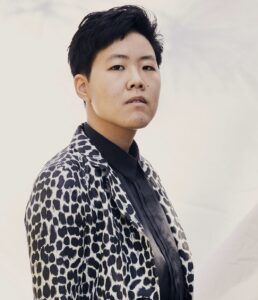
Muse Lee is a writer and theatremaker who has nurtured a love of Homer’s Iliad since childhood. As an educator, he taught writing and performance behind bars, first to youth involved in the juvenile justice system and then as a member of the Medea Project: Theater for Incarcerated Women and HIV Circle.
A few weeks after receiving his B.A. in English from Stanford University in 2019, he wrote a song called “Who Is This Boy?”, an intimate conversation between Achilles and Patroclus on the morning of Patroclus’ fateful battle. When Muse posted an online call for artists to help him workshop the piece, he received an unexpected deluge of inquiries–not from professionals, but from amateur theatre lovers and Greek mythology fans. Mostly middle and high schoolers, they were eager to be a part of this queer Iliad adaptation that did not yet exist. Muse knew then that the only thing to do was to write it.
One year later, buoyed by Aristos’ fast-growing social media fanbase, Muse and his unlikely team of young artists embarked on the ambitious project of remotely producing an album during quarantine. Through virtual auditions open worldwide, his small California ensemble has grown to an international collection of artists, ranging in age from 13 to 70 and representing seven different countries. Aristos now features earnest aspiring performers, professional actors, beloved music teachers, retired opera singers, renowned stage directors, and everything in between, all singing Homer’s immortal story. Developed by young amateurs outside established theatre institutions, funded entirely by its devoted fan community, this new musical has found remarkable success, appearing with Junior Classical League on state and national levels, as well as being the subject of California Classical Association (North)’s spring 2021 conference.
Muse’s version of The Iliad is a love story between two men, told by a cast heavily featuring queer and BIPOC artists. Aristos does not purport to reclaim this myth, nor to finally tell it as it “should” be told. Rather, the diverse team recognizes that their lived experiences compel them to connect to (and often confront) Homer’s epic in ways that differ from mainstream interpretations. Through this work, Muse asks: how do we use myth-making as a personal and cultural tool, both to justify cruelty, violence, and silencing, and to reckon with grief, loss, and memory?
For more on when and how you can stream Aristos, visit:
www.aristosmusical.com
aristosmusical on Instagram
ARISTOStheMusical on YouTube
Listen to “Cleopatra,” the album single, on Spotify, Apple Music, and all major streaming platforms.
[Return to the top of the page]
Lucrezia Maniscotti
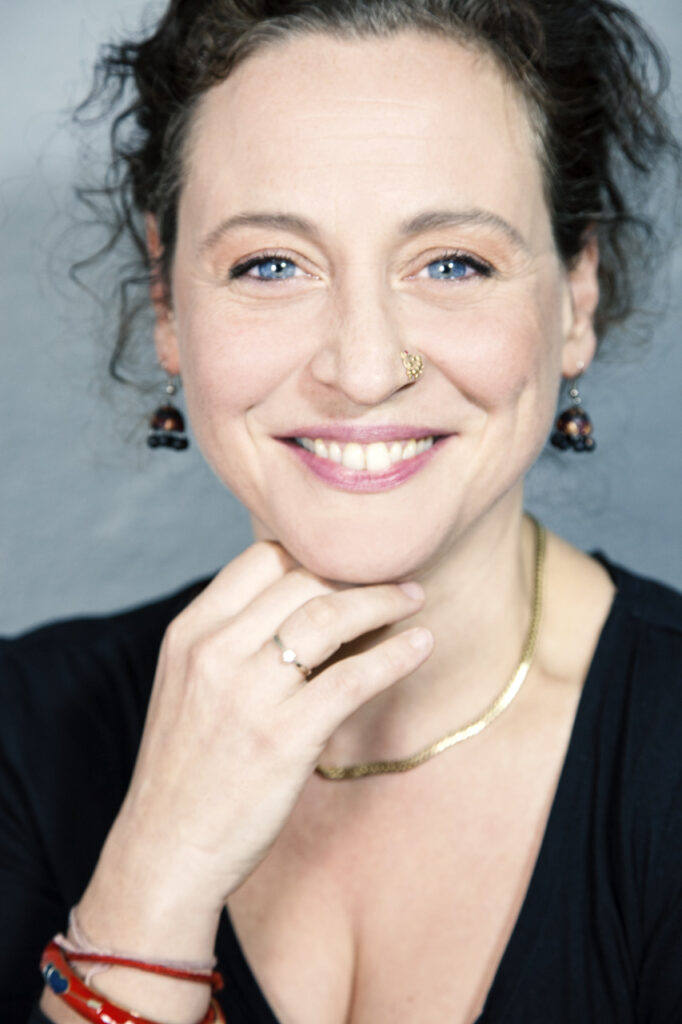
Fascinated by the richness of Greek mythology, especially in connection to the ancient world of theater, Lucrezia found many relatable parallels between Greek and Indian cultures during her Indological academic studies and through the decades of her performing experience. As a result, she decided to focus her project on a comparative work between the extraordinary Indian and Greek Mythologies, carrying on research on the respective ancient performing art forms.
Mīnākṣī and Hippolyta are both queens and female warriors. Mīnākṣī is a goddess belonging to south Indian mythology, born with three breasts, and ready to conquer the world; Hippolyta is the queen of the Amazons, the women-ruling society located at the end of the world. Both Mīnākṣī and Hippolyta share a certain kind of invincible feature in their own beings. A remarkable point is when Mīnākṣī meets Śiva, her predestined husband, and when Hippolyta is kidnapped by the civilizing hero Theseus while she is defending her community. These encounters with characters considered as outsiders marked a definitive shift in the predisposition of the warrior queens in both stories.
There are many overlapping topics in the two myths: The breast, the female warriors, the disguise and their masculine attributes, the armor of Mīnākṣī and the belt of Hippolyta, and the concept of justice (dharma and dikē). However, what has mostly captivated Lucrezia’s attention was the in-depth moment of surrender occurring to the two heroines; the rediscovery of their hidden (perhaps even overcompensated) femininity, of a delicacy that for too long had to disguise itself as something else; the surrender which becomes a victory because the ego that disappears makes room for something bigger, precious; the celebration of predestined meetings, the happening of the unexpected in life, of what is sometimes inexplicable.
As a visiting artist at CHS, Lucrezia will investigate the original texts in both myths in order to select the most significant passages to derive a connection that can potentially delve deeper into the apparent synonymity of Mīnākṣī and Hippolyta’s stories. In collaboration with Domenico Muscianisi, Lucrezia will give both practical and theoretical presentations.
On the performative level, the idea is to investigate the artistic languages of India and Greece, which actually share a lot of similarities. Interestingly, the concept of Nāṭya (theatre, drama) in Sanskrit includes music, literature, and dance as integral elements constituting the live performance. This is directly comparable to the so-called Mousikē Tekhnē in Greek. Even the detailed usage of hand gestures plays a leading role in actual performance: It is a common trait that has been referred to as Kheironomia in Greek and Mudrā in Sanskrit.
The final aim is to create and develop a solo performance to be presented in the West, as well as in Eastern countries, with a unique language crossing the different forms, from theater to dance, being able to talk about the contemporary world and challenges, using the epic and mythological power of the ancients, and challenging the boundaries of time and space.
For more information on Lucrezia’s work, please visit: www.lucreziamaniscotti.com.
[Return to the top of the page]
Ellen McLaughlin
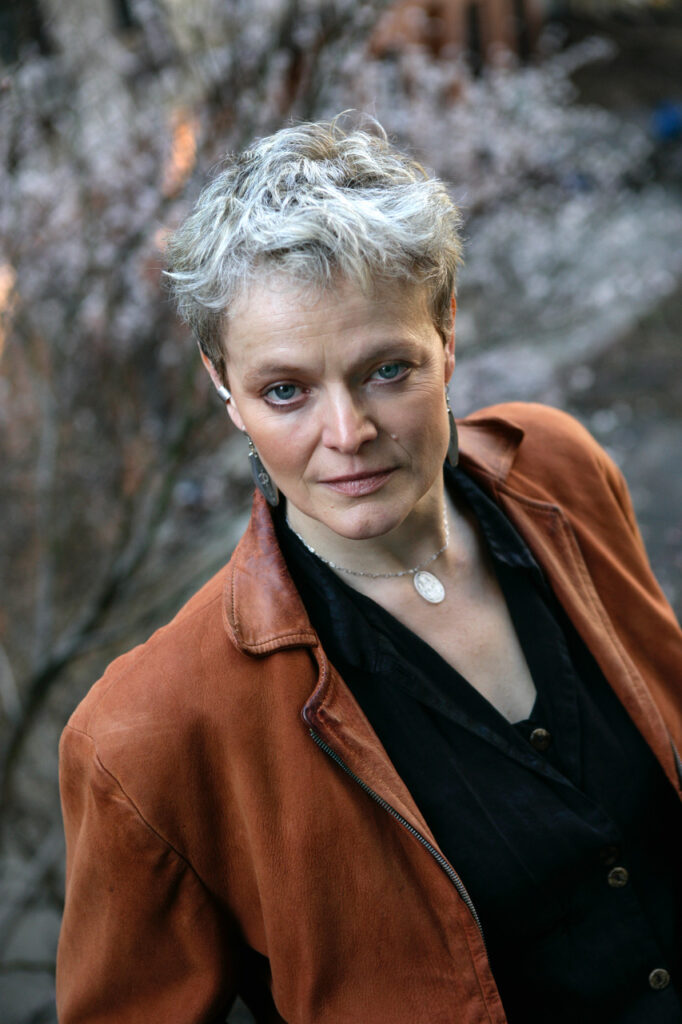
Ellen’s Statement of Intention: As must be true of so many people who have been drawn to the field, my connection to Greek classical literature goes back to remote childhood. I can’t remember a time before the myths and aesthetic of the Greeks weren’t an aspect of what I valued and the way I made meaning. As I grew up into someone who would find my livelihood and my passion in the theater, perhaps it was inevitable that I would eventually need to grapple with the form as the ancient Greeks conceived and crafted it. One commission in 1994—to write an adaptation of Sophocles’ Electra as the center play of a new version of the trilogy (two other playwrights adapted Aeschylus’ Agamemnon and Euripides’ Orestes) for a production in Los Angeles—brought me into an immediate relationship with classic source material after which, from one commission to the next over the years since, I have now adapted fourteen plays and written a music-theater piece based on The Odyssey called Penelope. It may not be surprising in retrospect, given my profound sense of connection to the Greeks from the beginning, but I seem to have spent the majority of my professional life in some kind of conversation with them.
My friendships over the years with classicists have been formative and vital to my understanding and my work. I was lucky enough early on to be taken into the circles of such luminaries as Helene Foley and Laura Slatkin, who, by teaching it, brought my work to students and other scholars who have opened up worlds to me that I would never have known otherwise. In 2019, Toni Dorfman, who taught my plays as a professor in the Theater Studies Department at Yale, introduced me to Stathis Livathinos, who was then artistic director of the National Theater of Greece. He invited me and Toni to teach a two week course to an international group of theater professionals in Delphi, culminating with a performance of our work in the Theater of Dionysus on the archeological site there. I wrote a series of scenes based on classical plays which the students performed in an evening none of us are likely to forget. Just before the pandemic, Bridget Murnaghan invited me to join her and Brian Rose, a professor of Archeology at University of Pennsylvania, to teach a graduate Classics course with them in Troy. There I adapted and directed a reading of my own version of The Trojan Women which the entire group performed in several languages, including Ancient Greek, in the ancient odeon in the archeological site. During these long months since the erasure of theater from the face of the world, few memories are as poignant for me as recalling that as the shadows lengthened and the characters bid farewell to the very city they were standing in the ruins of, you could hear sheep bells above the voices of the tragedy as a shepherd drove his flock down the path along the city walls, a path that must be the same one his ancestors have used for thousands of years, going back to the Troy we were evoking, with all its ancient sorrows.
I don’t know what I will do with this extraordinary opportunity you have given me to deepen my knowledge in the company of scholars and artists, but I know it can only strengthen my work and make it more resonant.
For more information on Ellen’s work, please visit: https://www.ellenmmclaughlin.com/
[Return to the top of the page]
Allyson Vieira
Artist Allyson Vieira lives and works in New York. She is currently Assistant Professor of Foundations at the Corcoran School of Art at the George Washington University in Washington, D.C. She has exhibited extensively both internationally and in the U.S., including institutional projects at Kunsthalle Basel, Swiss Institute, Storm King Art Center, PinchukArtCentre, Non-Objectif Sud, Frieze Projects, The Public Art Fund, The Highline, and SculptureCenter. Her first major catalog, Allyson Vieira: The Plural Present, was published by Karma Books in 2016. Her book of interviews with Greek master marble carvers, On the Rock: The Acropolis Interviews, for which she was the recipient of grants from the Graham Foundation, the Henry Moore Foundation, and FLACC, is now available from Soberscove Press.
In Allyson’s work, time is often stretched, folded, and twisted: the present and future treated as if they belong to an ancient archeological site. In a new series of weavings made from plastic bags and construction debris netting, Allyson continues her investigations of labor, craft, and the material evidence of time, while considering the knowledge, mythologies, and forms of communication that we inherit from past civilizations and reiterate to the next.
The text that appears in these tapestries is from the Human Interference Task Force: an ever changing think-tank of anthropologists, semioticians, nuclear physicists, behavioral scientists, linguists, engineers, architects, and other academics, first formed by the U.S. government in 1981. Tasked with creating warnings to mark sites of buried nuclear waste, their goal is to create physical and linguistic warnings that will be understood by human beings 10,000 years in the future. While still an ongoing project, their texts proposed thus far read more like Homeric poetry than they do futuristic prose:
This place is not a place of honor.
No highly esteemed deed is commemorated here.
Nothing valued is here.
This place is a message and part of a system of messages.
Pay attention to it!
Sending this message was important to us.
We considered ourselves to be a powerful culture.
Vieira’s weavings utilize boustrophedon, a type of bi-directional text found in archaic Greek manuscripts and inscriptions. In English translation, the Greek word boustrophedon means “to turn like oxen,” shifting from left-right to right-left like the plow-lines in a field. This way of writing offers a snaking form of linearity full of loops backward and re-starts, much like Vieira’s handling of time itself.
Created in New York during a dark year punctuating four dark years, these works are warnings, using idioms of the past to communicate from the present to the future, and from the future back to us. Three weavings are complete, one is in progress, and one weaving is yet to be begun: it uses no text at all to proclaim its warning across time. Four apotropaic eyes frame a bilaterally symmetrical gorgon’s mouth; fangs, tongue, and wild, staring eyes keep danger at bay.
For more information about Allyson’s relationship to the ancient world, please visit here and here.
[Return to the top of the page]
Sandra Voulgari
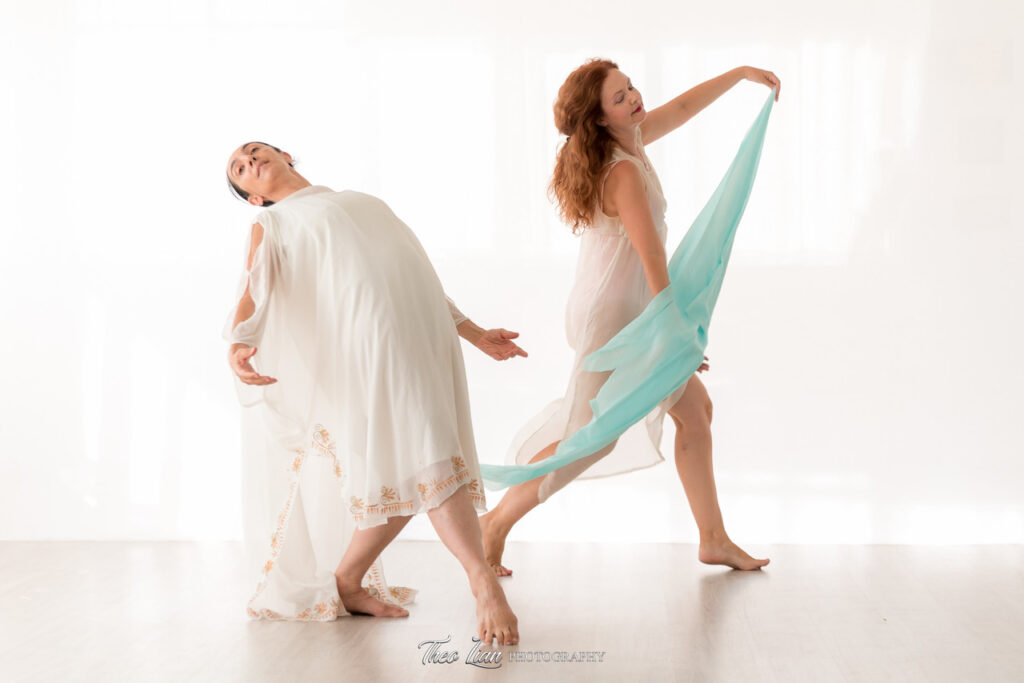
Sandra Voulgari currently works as a dance teacher at the Duncan Dance Research Center in Athens, Greece, teaching the Dance of Isadora Duncan, the Mother of modern dance who was greatly inspired by Ancient Greece. She has studied at the State School of Dance in Athens since she was 12 years old, following the tradition of the Hellenic Dance passed on by Koula Pratsika, a pioneer of dance in Greece and founder of the State School of Dance. Koula Pratsika was taught and greatly inspired by Eva Palmer Sikelianos and danced as a soloist in the first Delphic Games created by Angelos and Eva. Both the lineage of the tradition, which comes through in Sandra’s studies at the State School of Dance in Athens, and her studies on the Duncan Dance with Barbara Kane since 1995 in London are the main inspiration and guide in her work as a dancer, choreographer, and dance teacher. In the last year, Sandra and Andriana Papanicolaou, a Greek dancer and teacher that has specialized in the Classical Greek Dance method of Ruby Ginner, created a performance named Pilgrims (Ruby Ginner meets Isadora Duncan) where both their techniques, education, and experience as dance artists deeply connect to the Ancient Greek culture and lineage and search for the roots of this connection, aspiring to a new dance of the future where the ancient Greek spirit and ideals of beauty, grace, justice, and unity can still prevail and support humanity in its evolution. Their performance is an ongoing project that aspires, furthermore, to connect to Eva Palmer’s work and the Delphic Idea and to bridge the Greek folklore and traditions through the ongoing performance/project Nymphs Abodes, where they research and are inspired by ancient Greek myths, archetypes, and traditional Greek fairytales.
[Return to the top of the page]
